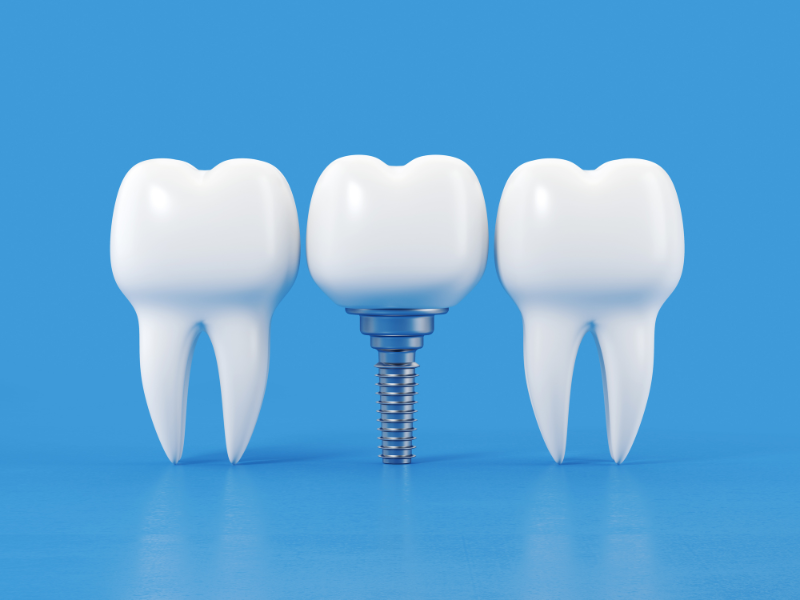Dental implantation has revolutionized the field of dentistry by providing a long-lasting solution for replacing missing teeth. It involves the surgical placement of titanium implants into the jawbone, which serve as artificial tooth roots. However, for successful dental implantation, a strong and healthy jawbone is essential. In cases where the patient lacks sufficient bone density or has experienced bone loss, bone grafting becomes a crucial procedure to ensure the success of dental implantation. In this article, we will explore the role of bone grafting in dental implantation, its benefits, and its significance in achieving optimal outcomes for patients seeking the best dental implants in India.
What is Bone Grafting?
Bone grafting is a dental procedure that involves transplanting bone tissue into areas of the jawbone that lack sufficient volume or density. The bone tissue used for grafting can be taken from the patient’s own body (autogenous graft), a donor (allograft), or synthetic materials (alloplastic graft). The graft material acts as a scaffold, providing support and stimulating the growth of new bone cells. Over time, the transplanted bone integrates with the patient’s existing bone, creating a stronger foundation for dental implants.
The Role of Bone Grafting in Dental Implantation:
- Restoring Bone Volume: Bone loss can occur due to various factors, such as tooth extraction, periodontal disease, trauma, or natural aging. Insufficient bone volume can pose challenges for dental implant placement, as the implants require a stable and adequate bone structure for support. Bone grafting helps to restore lost bone volume and create a solid foundation for the implants, ensuring their long-term success.
- Preservation of Facial Structure: The jawbone provides support to the facial structure, including the cheeks, lips, and chin. When a tooth is lost, the underlying bone can deteriorate, leading to a sunken or aged appearance. Bone grafting helps to preserve the natural contours of the jawbone, maintaining facial aesthetics and preventing the collapse of facial structures.
- Enhanced Implant Stability: Dental implants rely on osseointegration, a process where the implant fuses with the surrounding bone. Adequate bone density and volume are crucial for successful osseointegration. By grafting bone into areas of bone deficiency, the implant stability is significantly improved, reducing the risk of implant failure and ensuring long-term durability.
- Improved Esthetics and Functionality: Dental implants not only restore the appearance of a natural smile but also enhance oral functionality, including chewing and speaking. Bone grafting helps to create a solid foundation for dental implants, allowing patients to enjoy the full functionality of their new teeth. Moreover, it supports the proper alignment and positioning of the implants, resulting in aesthetically pleasing outcomes.
Benefits of Bone Grafting:
- Increased Success Rate: Bone grafting significantly improves the success rate of dental implantation, especially in patients with compromised bone density or volume. By providing a stable base for implant placement, bone grafting enhances the chances of successful osseointegration and long-term implant retention.
- Improved Aesthetics: Bone grafting helps to maintain the natural contours of the face and prevent the loss of facial structure that can occur with bone resorption. This leads to improved facial aesthetics and a more youthful appearance.
- Enhanced Functionality: With a solid foundation created by bone grafting, dental implants offer improved chewing efficiency and speech clarity, allowing patients to enjoy their favorite foods and speak with confidence.
- Long-Term Stability: Dental implants supported by a well-integrated bone graft have higher stability and longevity. Patients can expect their implants to withstand normal biting forces and last for many years with proper oral hygiene and regular dental care.
Frequently Asked Questions (FAQs):
Q1: Is bone grafting a painful procedure?
A1: Bone grafting is performed under local anesthesia, ensuring that the patient feels little to no pain during the procedure. Post-operative discomfort can be managed with pain medications prescribed by the dentist.
Q2: How long does it take for the bone graft to heal?
A2: The healing time for a bone graft varies depending on the patient’s overall health and the extent of the grafting procedure. Generally, it takes several months for the graft to integrate with the existing bone before dental implants can be placed.
Q3: Are there any risks associated with bone grafting?
A3: As with any surgical procedure, there are risks involved, such as infection, bleeding, or graft failure. However, with proper pre-operative evaluation, skilled surgical technique, and post-operative care, the risks can be minimized.
Conclusion:
Bone grafting plays a crucial role in dental implantation, providing a strong foundation for the placement of dental implants. By restoring bone volume, preserving facial structure, and enhancing implant stability, bone grafting ensures the long-term success of dental implant procedures. If you are seeking the best dental implants in India, it is essential to consult with a skilled and experienced dentist who can evaluate your specific needs and determine if bone grafting is necessary for optimal results. With the advancements in dental techniques and materials, bone grafting has become a routine and highly effective procedure, enabling patients to achieve a beautiful smile and restored oral functionality.






 WhatsApp - Click to Chat
WhatsApp - Click to Chat